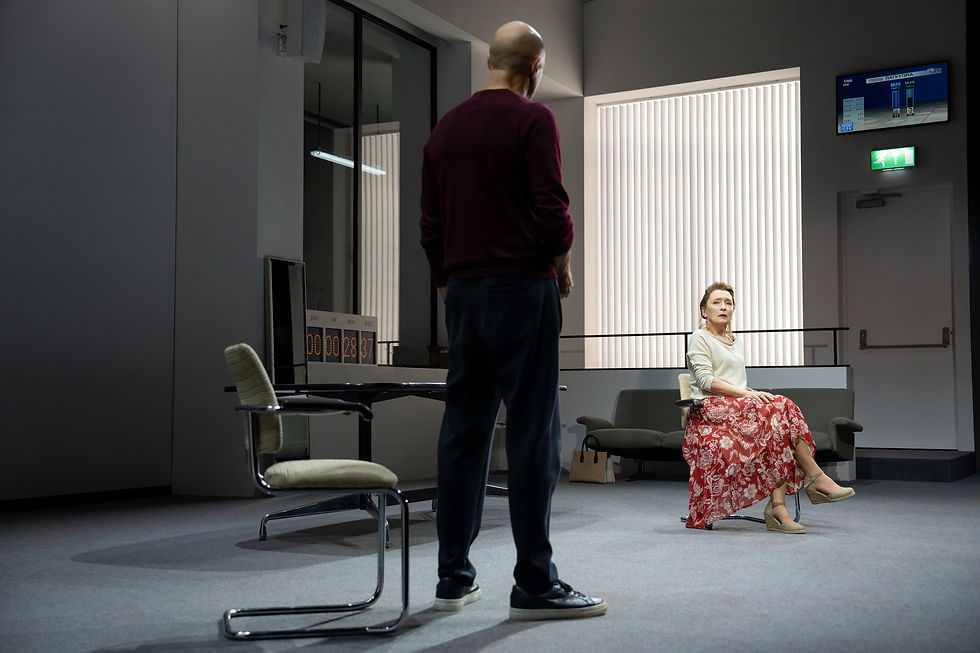Mud
- Jonathan Kalb
- Oct 12, 2017
- 3 min read
Updated: May 16, 2020

Maria Irene Fornes’s 1983 play Mud, widely considered a contemporary classic, is rarely produced at full strength. Each of the four productions I’ve seen—including a dreadfully misconceived version directed by David Esbjornson in the 1999 Fornes season at Signature Theater—were flawed in basic ways.
In my experience, what usually happens is one of two things. Either Fornes’s powerful visual imagery and whimsicality are sacrificed for pedestrian realism, making the work, to all appearances, a mildly offensive, downtown-chic docudrama about hillbillies. Or else the opposite occurs. The production strains so much after indirection and surreality that it ends up draining everything of plausibility, including the surrealism.
Elena Araoz’s Boundless Theatre Company production, running at Teatro Circulo until Oct. 29, is a particularly fine example of the realistic bias. It is funny, sharp, moving, and happily avoids the pedestrian.
Set in a spare, bone-white wooden room perched on a red-earth promontory, Mud tells the story of an illiterate young woman named Mae who strives to escape poverty, brutality and ignorance by learning to read. She is thwarted by two millstone-men, one named Lloyd who is young, rude, shabby and has been with her since childhood, the other named Henry, an older, quasi-respectable neighbor she invites in and hopes to learn from.
This gorgeously bleak work is a tough and elastic tissue of verbal artifice, not a naturalistic study of real-world squalor. It tells a tale of crushed self-reflection but as a dance of strange balances. The action is clearly allegorical yet for 17 quick scenes it twists our emotions with the details of three decidedly idiosyncratic temperaments. Frozen tableaus occur between the scenes, the dialogue is chiseled and rigorous like Beckett’s, the environment ambiguous and claustrophobic, yet the characters earn money, visit a medical clinic, and tend real vegetables. We’re supposed to be unsure whether we’re in a flagrantly theatrical purgatory or a place locatable on a map.
Another peculiarity is that the play dangles emancipatory feminism only to undercut it in the end. Mae may ultimately be a victim, but she doesn’t do much to help herself. She never seeks connections with anyone or anything outside her trap of a home, and her admiration for Henry’s ability to speak well is curiously passive. It’s never entirely clear what the two of them want from one another, and her incipient power over language, her nascent awakening, comes to nought.
The strength of Araoz’s production is its sharp focus on this pointedly inconclusive story of timidity and indolence in the face of gnawing spiritual hunger.

The stage design by Regina Garcia shows no structure on a promontory, only a drab, dark and seedy kitchen interior with a few whimsically wayward wood pieces jutting out here and there. The audience—no more than a few dozen people—is shoved up against a plain kitchen table and chairs so closely we feel like eavesdroppers.
Nicole Villamil is terrific as Mae—fierce and diffident, cold and tender, bemused and serious as necessary, carelessly graceful and effortlessly subservient without ever seeming to fake it (a common problem with this role). She quickly establishes clear and distinct relationships with both men—Julian Elijah Martinez as Lloyd and Nelson Avidon as Henry—which allows us to follow the text’s many subtle power shifts as intimately as the actors’ facial expressions.
The men too feel strongly anchored to her, one another, and their environment. Martinez whimpers, sulks and shrinks inside his skin when Lloyd is ill, then seems to grow, actually to swell physically when he recovers, leaping about the minuscule kitchen while gloating at Henry’s illness and very nearly braining some front-row patrons. Avidon, for his part, wisely underplays Henry’s early gentle interactions with Mae, and that softspoken start sets him up nicely to shock us with his naked malice as a cripple later on.
This production does lack the image-punch of the original play, the visual grandeur and complexity of the enigmatic stage picture Fornes conceived. But it credibly captures the moment-to-moment nuance of the funny-sad, touchingly sick tale better than most others I’ve seen, and that’s no small accomplishment.
Photos by Al Foote III




Comments